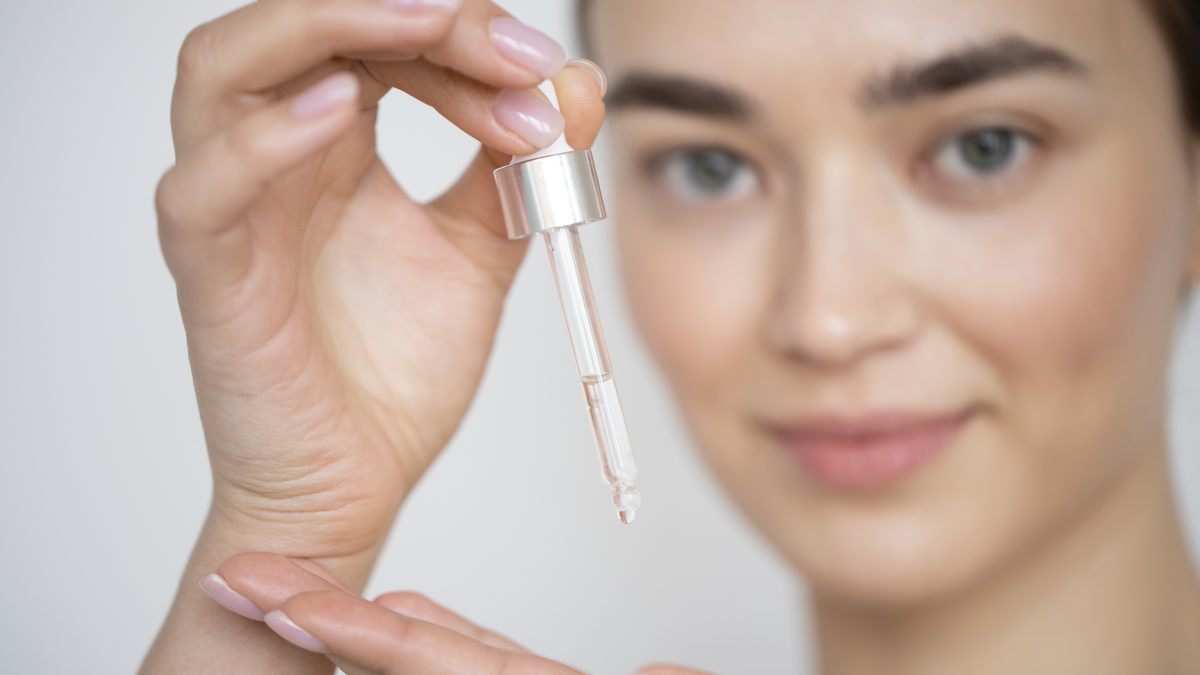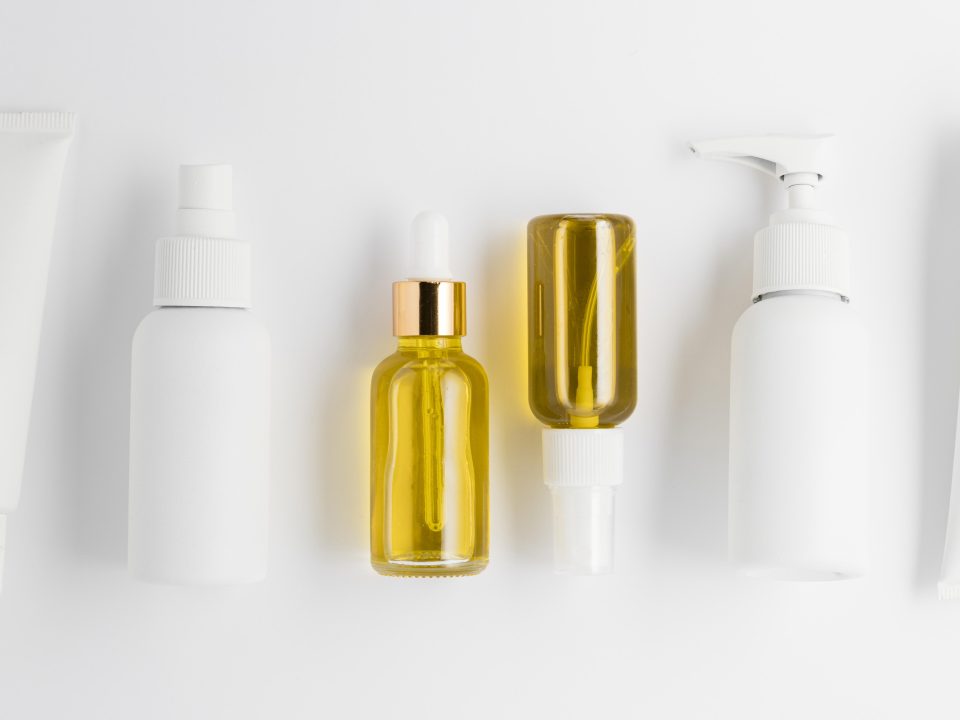
Is Salicylic Acid Better Than Hyaluronic Acid?
March 7, 2024
Is Salicylic Acid Good For Oily Skin?
March 7, 2024Salicylic acid, a beta hydroxy acid (BHA), is a popular ingredient in many skincare products. Praised for its ability to combat acne, reduce blackheads, and promote clearer skin, it can be a powerful ally in your skincare routine. However, to maximize its benefits and minimize potential side effects, using salicylic acid correctly is crucial. This guide delves into the essential steps for safe and effective use, exploring different product forms like cleansers, toners, serums, and spot treatments, to help you navigate the world of salicylic acid and achieve your desired results.
How to Use Salicylic Acid Safely and Effectively
Preparation
- Cleanse your face: Before applying any salicylic acid product, it’s crucial to remove dirt, oil, and makeup from your skin. Use a gentle cleanser specifically formulated for sensitive skin or acne-prone skin. Avoid harsh products that can strip your skin of its natural oils.
- Pat dry, don’t rub: After cleansing, pat your face dry with a clean, soft towel. Rubbing can irritate your skin, especially when using salicylic acid.
Application
- Start with a pea-sized amount: When applying any salicylic acid product, less is more. Begin with a pea-sized amount to minimize the risk of irritation. You can always increase the amount gradually if your skin tolerates it well.
- Lower concentration first: If you’re new to salicylic acid, opt for a product with a lower concentration, such as 0.5% or 1%. You can move to higher concentrations later as your skin adjusts.
- Avoid sensitive areas: Be cautious around your eyes, lips, and any broken or irritated skin. Salicylic acid can be particularly harsh on these areas and cause stinging or burning.
Specific Instructions for Different Forms
- Cleansers: Massage the cleanser onto damp skin using gentle circular motions. Rinse thoroughly with lukewarm water and pat dry.
- Toners: Apply the toner with a cotton pad, gently swiping it over your face and neck. Avoid harsh rubbing or applying too much pressure.
- Serums: Apply a few drops of the serum onto your fingertips and massage it gently into your face, avoiding the eye area and lips.
- Spot treatments: Dab a small amount of the product directly onto individual blemishes using a clean fingertip.
Frequency
- Start slow, especially for sensitive skin: Begin by using salicylic acid once a day or every other day, especially if you have sensitive skin. This allows your skin to adjust to the product and minimizes the risk of irritation.
- Gradually increase: If your skin tolerates the initial frequency well, you can gradually increase to twice a day. However, it’s crucial to listen to your skin.
- Listen to your skin: If you experience any dryness, redness, or irritation, reduce the frequency of application or stop using the product altogether.
Moisturizing
- Moisturize daily: Salicylic acid can be drying, so it’s essential to use a moisturizer after each application.
- Oil-free and non-comedogenic: Choose an oil-free, non-comedogenic moisturizer suitable for acne-prone skin. This type of moisturizer won’t clog your pores and worsen your breakouts.
Sun Protection
- Sunscreen is crucial: Salicylic acid increases your skin’s sensitivity to the sun, making it more prone to sunburn. Therefore, daily sunscreen use is non-negotiable.
- Broad-spectrum SPF 30+: Apply a broad-spectrum sunscreen with SPF 30 or higher every morning, regardless of the weather. Reapply every two hours, especially after sweating or swimming.
Additional Tips
- Introduce new products gradually: If you’re using other skincare products with active ingredients, introduce salicylic acid one at a time to pinpoint any potential reactions.
- Consult a dermatologist: If you have concerns about using salicylic acid or experience persistent irritation, consult a dermatologist for personalized advice and treatment recommendations.
By following these steps and understanding the potential side effects, you can use salicylic acid safely and effectively to achieve clearer, smoother skin.
Understanding Your Skin: The Key to Salicylic Acid Success
Knowing your skin type is absolutely crucial before introducing salicylic acid into your skincare routine. Different skin types have varying levels of tolerance and respond uniquely to different ingredients, including salicylic acid. Understanding your specific skin type empowers you to choose the right salicylic acid product and application method for optimal results and minimal irritation.
Deciphering Your Skin Type
There are four primary skin types:
- Oily Skin: Characterized by an excessive production of sebum (oil) that leaves the skin shiny and prone to breakouts, blackheads, and whiteheads.
- Dry Skin: Lacks sufficient natural oils, resulting in a tight, flaky, and sometimes itchy feeling. Dry skin is less prone to acne but can be sensitive to harsh products.
- Sensitive Skin: Easily reacts to various skincare ingredients and environmental triggers, exhibiting symptoms like redness, stinging, and burning.
- Combination Skin: A mix of different types, often with an oily T-zone (forehead, nose, and chin) and dry cheeks.
How Skin Type Influences Salicylic Acid Responses
Oily Skin
- Benefits: Salicylic acid thrives in oily environments. It effectively penetrates through the sebum layer, unclogs pores, and reduces breakouts.
- Considerations: While generally well-tolerated, overuse can strip away too much oil, leading to dryness and irritation. Start with a lower concentration (0.5% – 1%) and use it once a day initially.
Dry Skin
- Benefits: Salicylic acid can still be beneficial for dry skin, especially in addressing occasional breakouts.
- Considerations: Dry skin is more prone to irritation from salicylic acid. Choose a gentle formula (low concentration, cream-based) and use it sparingly (every other day or even twice a week). Prioritize a good moisturizer to prevent over-drying.
Sensitive Skin
- Benefits: While salicylic acid can be helpful for acne, its potential for irritation makes it riskier for sensitive skin.
- Considerations: Proceed with extreme caution. Patch test new products for at least 24 hours before full-face use. Start with the lowest concentration available and use it infrequently (once a week). Consider consulting a dermatologist for personalized guidance.
Combination Skin
- Benefits: Salicylic acid can be beneficial for addressing both oily and acne-prone areas while being gentle on dry areas.
- Considerations: Tailor your approach based on specific zones. Use a targeted approach like spot treatment for oily areas and a gentler formula on drier zones.
The Importance of Consulting a Dermatologist
A dermatologist is your ultimate resource for personalized skincare advice, especially when dealing with sensitive skin or complex concerns. They can:
- Accurately diagnose your skin type: A dermatologist’s expertise can help identify any underlying conditions that might affect your skin’s response to salicylic acid.
- Recommend the right product and approach: Based on your unique skin type and concerns, they can suggest the most suitable salicylic acid product type (cleanser, toner, serum, etc.), concentration, and usage frequency.
- Monitor your progress and address issues: They can monitor your skin’s reaction to salicylic acid and address any concerns you might have regarding side effects or lack of desired results.
Remember, your skin is unique, and its response to salicylic acid can be just as individual. Taking the time to understand your skin type and seeking professional guidance from a dermatologist will set you on the path towards achieving healthy, clear skin with the help of salicylic acid.
Choosing the Right Salicylic Acid Product: A Guide to Tailoring Your Treatment
Selecting the most suitable salicylic acid product involves a three-pronged approach: concentration, form, and ingredients. Each element plays a crucial role in determining the effectiveness and gentleness of the product on your unique skin.
Concentration: Navigating the Strength Spectrum
Salicylic acid concentration varies significantly across different products, ranging from 0.5% to 2% for most over-the-counter skincare products. Here’s a breakdown of the range and its impact:
- 0.5% – 1%: This low concentration is ideal for sensitive skin or those new to salicylic acid. It provides a gentle introduction, minimizes the risk of irritation, and is suitable for daily use.
- 1% – 2%: This mid-range concentration offers a balance between effectiveness and gentleness. It’s suitable for most oily and acne-prone skin types and can be used daily or every other day depending on your skin’s tolerance.
- Above 2%: These higher concentrations are typically prescription-only and intended for severe acne cases under the supervision of a dermatologist. They can be highly effective but also carry a greater risk of irritation and require careful monitoring.
Remember: It’s always best to start with a lower concentration and gradually increase it if your skin tolerates it well. This approach minimizes the potential for adverse reactions and allows your skin to adjust comfortably.
Form: Choosing the Right Delivery System
Salicylic acid comes in various product forms, each with its own advantages and drawbacks:
- Cleansers:
- Pros: Gentle and suitable for daily use, removes dirt and oil while providing a light exfoliation.
- Cons: May not be as effective as other forms for treating stubborn breakouts, as the contact time with skin is brief.
- Toners:
- Pros: Offers additional exfoliation and pore-minimizing benefits, ideal for oily and combination skin.
- Cons: Can be drying or irritating, especially for sensitive skin. Apply with a cotton pad, avoiding harsh rubbing.
- Serums:
- Pros: Lightweight and concentrated, providing targeted treatment for breakouts.
- Cons: Can be more expensive than other forms and might be too potent for sensitive skin.
- Moisturizers:
- Pros: Hydrates and soothes the skin while delivering a gentle dose of salicylic acid.
- Cons: May not be as concentrated as other forms, making them less effective for severe acne.
- Spot treatments:
- Pros: Highly targeted application directly on blemishes for concentrated treatment.
- Cons: Can be drying, so spot-treat specific areas only and avoid applying to the entire face.
Choosing the right form depends on your skin type, acne severity, and desired results. Consider your preferences for a more gentle (cleanser) or potent (serum) approach, and prioritize products suited to your specific needs.
Ingredients: Understanding the Mix
Beyond salicylic acid, a product’s other ingredients can significantly impact its effectiveness and gentleness on your skin. Here’s what to watch out for:
- Hydrating ingredients: Look for ingredients like hyaluronic acid, glycerin, or ceramides, which help counteract the potential drying effect of salicylic acid.
- Soothing ingredients: Ingredients like aloe vera, centella asiatica, or niacinamide can calm and soothe the skin, reducing potential irritation.
- Exfoliating ingredients: While salicylic acid exfoliates, be cautious of additional exfoliating ingredients like AHAs (alpha hydroxy acids) or BHAs (beta hydroxy acids) aside from salicylic acid, as they can further aggravate sensitive skin.
- Fragrances and dyes: These can be irritating for sensitive skin, so opt for fragrance-free and dye-free products whenever possible.
Carefully examine the ingredient list before purchasing a product. If you have concerns about any ingredient interaction, consult a dermatologist for personalized guidance.
Brand Selection: A Responsible Approach
While it’s important to choose reputable brands known for their quality and safety standards, avoiding specific brand endorsements within this guide adheres to ethical and professional considerations. Instead, focus on understanding the key factors mentioned above and conduct your own research to find a brand that aligns with your budget, preferences, and ethical values.
By carefully considering concentration, form, and ingredients, you can confidently choose the salicylic acid product that best suits your unique skin and needs. Remember, a responsible approach and informed decision-making are key to maximizing the benefits and minimizing the risks of incorporating salicylic acid into your skincare routine.
Potential Side Effects and Troubleshooting: Navigating Salicylic Acid’s Challenges
While generally safe and well-tolerated, salicylic acid use can occasionally come with potential side effects. It’s crucial to be aware of these and know how to address them for a smooth and successful experience.
Common Side Effects
- Dryness: Salicylic acid’s exfoliating properties can disrupt the skin’s natural moisture barrier, leading to dryness. This manifests as tightness, flaking, and even scaling, particularly for those with already dry or dehydrated skin.
- Redness and irritation: This can occur, particularly in individuals with sensitive skin, as salicylic acid can irritate the skin barrier. Symptoms might include redness, burning, stinging, and itchiness.
- Increased sun sensitivity: Salicylic acid’s exfoliating properties can thin the outer layer of your skin, making it more vulnerable to the sun’s harmful rays. This increased sun sensitivity can lead to sunburn, unwanted darkening of the skin (hyperpigmentation), and accelerate the signs of premature aging like wrinkles and fine lines.
Addressing Side Effects
If you experience any side effects, it’s crucial to:
- Stop using the product immediately: Stop using the salicylic acid product immediately and pay close attention to your skin for any signs of improvement or worsening irritation. This will help you determine if the reaction subsides or if you need to seek further assistance.
- Seek professional guidance: If the side effects are severe or persistent, don’t hesitate to consult a dermatologist. Their expertise can help assess your skin’s reaction, recommend alternative treatments that better suit your needs, and ensure proper healing for a healthy, balanced complexion.
Troubleshooting Common Issues
Dryness
- Switch to a gentle cleanser: Opt for a cleanser specifically formulated for dry or sensitive skin. Look for ingredients like ceramides, hyaluronic acid, or glycerin, which help hydrate and soothe the skin.
- Increase hydration: Use a richer, oil-free moisturizer after applying salicylic acid. Apply moisturizer twice daily or more often if needed to combat dryness.
Redness and irritation
- Reduce frequency: If you experience redness or irritation, reduce the frequency of using the salicylic acid product. Start by applying it every other day or even twice a week and gradually increase the frequency as your skin adjusts.
- Lower concentration: Consider switching to a product with a lower concentration of salicylic acid (0.5% – 1%). This can be gentler on your skin and help minimize irritation.
- Change the form: If one form (e.g., cleanser, toner) irritates your skin, try a different form (e.g., serum, spot treatment). Sometimes, the application method or ingredients in a specific form can contribute to irritation.
Purging
- Understand the process: Occasionally, when you begin using salicylic acid, you might experience an initial breakout. This phenomenon, known as “purging,” occurs because salicylic acid accelerates cell turnover and brings existing clogged pores to the surface, making them visible temporarily.
- Be patient: This initial breakout is usually temporary and signifies that the product is working by clearing out clogged pores. It typically resolves within a few weeks, after which you should see an improvement in your overall skin clarity.
- Seek guidance if concerned: While initial breakouts (purging) are a possible temporary occurrence when starting salicylic acid, if the breakouts appear excessive or persist beyond a few weeks, seeking guidance from a dermatologist is crucial. Their expertise can ensure your skin is responding normally and provide personalized advice to optimize your treatment plan for achieving clearer, healthier skin.
Remember: Everyone’s skin reacts differently to salicylic acid. By understanding the potential side effects and implementing these troubleshooting tips, you can navigate challenges and maximize the benefits of incorporating salicylic acid into your skincare routine. Always prioritize your skin’s health and seek professional guidance if needed.
Additional Tips and Recommendations: Optimizing Your Salicylic Acid Journey
Beyond the essential steps covered earlier, here are some additional tips and recommendations to help you get the most out of your salicylic acid experience:
Patch Testing: A Crucial Precaution
Before applying any new salicylic acid product to your entire face, conduct a patch test. This simple step helps identify potential allergic reactions or sensitivities before widespread application:
- Choose a discreet area: Apply a pea-sized amount of the product to the inner arm, ideally the crook of your elbow. This area is less delicate than your face and mimics the conditions your face experiences, providing a reliable indication of how your skin will react to the salicylic acid.
- Wait and observe: Allow the product to remain undisturbed on your chosen area for a full 24 to 48 hours. During this time, closely monitor the application site for any signs of irritation, such as redness, itching, or burning sensations.
- Proceed with caution: If no reaction occurs, it’s generally safe to use the product on your face. However, even if a patch test doesn’t reveal any issues, always start with a lower concentration and gradually increase frequency as tolerated.
Gradual Incorporation: Allowing Your Skin to Adapt
When introducing salicylic acid into your routine, it’s crucial to incorporate it gradually. This allows your skin to adjust to the new ingredient and minimizes the risk of irritation:
- Start slow: Begin by using the product once or twice a week. This allows your skin to get accustomed to salicylic acid without overwhelming it.
- Increase gradually: If your skin tolerates the initial frequency well, you can gradually increase it to daily use or even twice a day, depending on your needs and skin’s response.
- Listen to your skin: Pay close attention to how your skin feels throughout the process. If you experience any discomfort, reduce the frequency or stop using the product altogether.
Consistency is Key: Unlocking Long-Term Benefits
For optimal results, remember that consistency is key with salicylic acid:
- Regular use: Aim to use the product consistently according to the recommended frequency and instructions. Skipping applications can disrupt the progress and hinder the effectiveness of the treatment.
- Patience is rewarded: Salicylic acid generally takes 4-6 weeks to show noticeable results. Be patient and consistent with your routine to allow the product to work its magic.
Lifestyle Factors: A Holistic Approach to Clear Skin
While salicylic acid can be a valuable tool in managing acne, remember that lifestyle factors also play a significant role in overall skin health:
- Balanced diet: Maintaining a balanced diet rich in fruits, vegetables, and whole grains provides your skin with the essential nutrients it needs to thrive.
- Adequate sleep: Aim for 7-8 hours of sleep each night. When you’re sleep-deprived, your body produces more stress hormones, which can contribute to breakouts.
- Stress management: Chronic stress can exacerbate acne. Find healthy ways to manage stress, such as exercise, meditation, or yoga, to promote overall well-being and potentially improve your skin’s health.
By incorporating these additional tips and recommendations into your salicylic acid routine, you can create a holistic approach to achieving and maintaining clearer, healthier skin. Remember, consistency, patience, and a well-rounded approach are key to optimizing your salicylic acid journey.
Conclusion
Salicylic acid offers a powerful tool for combating acne, but navigating its use effectively and safely requires careful consideration. Understanding your unique skin type, selecting the right product and form, and adopting a gradual and consistent approach with proper sun protection are crucial elements for maximizing its benefits and minimizing potential drawbacks. Remember, listening to your skin and identifying any potential side effects is essential. If you experience persistent concerns or have complex skin needs, consulting a dermatologist is always the wisest course of action. Embrace a responsible and informed approach to incorporating salicylic acid into your routine, allowing you to harness its potential for achieving clearer, healthier skin.









